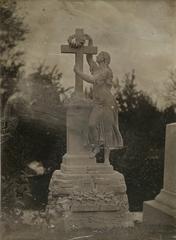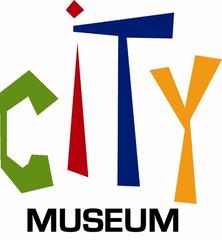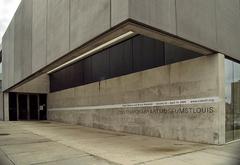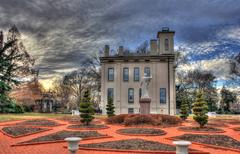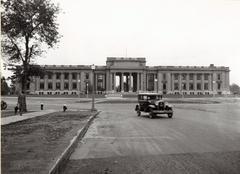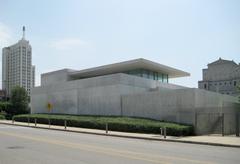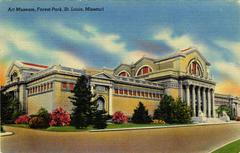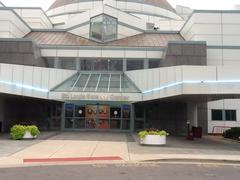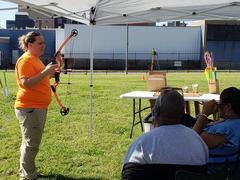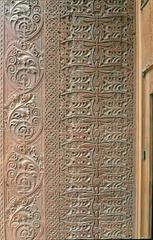St. Louis Exposition and Music Hall: History, Visiting Guide, and Cultural Legacy
Date: 04/07/2025
Introduction
The St. Louis Exposition and Music Hall was a beacon of civic pride and cultural ambition in downtown St. Louis during the late 19th and early 20th centuries. Built in 1884, it served as a grand stage for exhibitions, concerts, political conventions, and community celebrations. Though the original building was demolished in the early 1900s, its legacy continues through the city’s architectural landmarks, museums, and ongoing cultural events. Today, visitors can explore the site’s historical significance, experience related exhibitions, and discover how the Hall’s spirit endures in St. Louis’s vibrant arts scene.
For comprehensive historical resources and visitor information, see the St. Louis Public Library, Missouri History Museum, and Retroseasons.
Table of Contents
- Origins and Construction
- Architectural Features and Innovations
- Major Events and Civic Impact
- The Hall’s Demolition and Urban Transformation
- Visiting the Site Today: Hours, Tickets, Accessibility
- Nearby Attractions and Walking Tours
- Cultural and Musical Legacy
- Frequently Asked Questions (FAQ)
- Tips for Visitors
- References and Further Reading
Origins and Construction
Envisioned as a symbol of St. Louis’s emergence as a Midwest cultural and economic powerhouse, the Exposition and Music Hall was constructed between 1883 and 1884. Located at Olive and 14th Streets (St. Louis Public Library), the Hall’s imposing façade and vast interior spaces were designed to host large-scale exhibitions and events. Its creation reflected the city leaders’ aspirations to rival major urban centers and foster innovation in arts, industry, and agriculture.
Architectural Features and Innovations
The Hall was renowned for its engineering ingenuity and adaptability. Its expansive main hall could be transformed for aquatic spectacles—dubbed the “Water Hippodrome”—by flooding the floor, making it a forerunner to modern multipurpose arenas (St. Louis Public Library). Key features included:
- One of the largest indoor spaces of its era
- Advanced electric lighting
- Acoustics tailored for concerts and public assemblies
- Seating for up to 3,500, with a stage accommodating 1,500 performers
Major Events and Civic Impact
The Exposition and Music Hall became a nexus for major national and local events:
- 1888 Democratic National Convention: Hosted the nomination of Grover Cleveland (St. Louis Public Library)
- Annual Expositions: Showcased agricultural, industrial, and artistic achievements
- Musical Milestones: Home to the St. Louis Symphony and associated with ragtime legend Scott Joplin
- Community Gatherings: Venue for public debates, civic celebrations, and political rallies
The Hall’s vibrant programming helped shape St. Louis’s identity as a leading American city.
The Hall’s Demolition and Urban Transformation
In the early 20th century, as St. Louis prepared for the 1904 World’s Fair, the Exposition and Music Hall was demolished (1907–1908) to make way for new urban projects, including the Central Library and Lucas Park (Retroseasons; St. Louis Public Library). The Central Library, designed by Cass Gilbert, now occupies the site and is a testament to the City Beautiful movement’s influence on urban renewal.
Visiting the Site Today: Hours, Tickets, and Accessibility
The original Hall no longer stands, but its legacy can be explored at the Central Library and Lucas Park:
- St. Louis Central Library
- Hours:
- Monday–Thursday: 9 AM – 9 PM
- Friday–Saturday: 9 AM – 5 PM
- Sunday: 1 PM – 5 PM
- Admission: Free
- Accessibility: Fully wheelchair accessible with elevators and ramps
- Exhibits: Historical displays and archival materials are available inside
- Hours:
For the latest hours and exhibit information, visit the St. Louis Public Library website.
Nearby Attractions and Walking Tours
Enhance your visit with these nearby sites and experiences:
- Missouri History Museum: Features extensive exhibits on the 1904 World’s Fair and St. Louis’s history (Missouri History Museum)
- Saint Louis Art Museum: Located in Forest Park, with collections related to the city’s exposition era
- Old Courthouse: Site of the Dred Scott case
- Guided Walking Tours: Local organizations and the Missouri History Museum offer guided explorations of downtown and Forest Park, highlighting the exposition’s legacy
Cultural and Musical Legacy
The Hall was instrumental in shaping St. Louis’s musical heritage, hosting orchestras, ragtime pioneers, and fostering a vibrant performing arts scene. Its acoustics and stage design set standards for future venues. Though the Hall reflected the social complexities of its era—including racial segregation (The Saint Louis Story)—its impact as a cultural hub is still celebrated.
Artifacts such as the 1884 HK-600 St. Louis Exposition and Music Hall Dollar are cherished collectibles (Coin Appraiser).
Frequently Asked Questions (FAQ)
Q: Does the original St. Louis Exposition and Music Hall still exist?
A: No, it was demolished in the early 20th century. The Central Library now occupies the site.
Q: Can I visit exhibits about the Exposition and Music Hall?
A: Yes. The Central Library and Missouri History Museum feature related exhibits and archival materials.
Q: Are there tickets or fees to visit these sites?
A: General admission to the Central Library and Missouri History Museum is free, though special exhibits may require tickets.
Q: Is the site wheelchair accessible?
A: Yes, all major museums and the Central Library are ADA-compliant.
Q: Are guided tours available?
A: Yes. Many local tours include the site and related historical landmarks. Check with the Missouri History Museum or Explore St. Louis for options.
Tips for Visitors
- Plan Ahead: Check museum websites for current hours and exhibitions.
- Combine Attractions: Pair your visit with Forest Park, the St. Louis Zoo, or the Saint Louis Art Museum.
- Join a Tour: Guided tours offer deeper context on the area’s exposition history.
- Use Public Transit: The site is easily accessible by MetroLink and city buses.
- Stay Informed: Download the Audiala app for audio tours and updates on St. Louis’s historic sites.
References and Further Reading
- St. Louis Public Library Digital Collections
- Retroseasons St. Louis Arena History
- The Saint Louis Story on 1904 World’s Fair
- Missouri History Museum
- Coin Appraiser: St. Louis Exposition and Music Hall Coins
- Midstory: The Legacy of the 1904 St. Louis World’s Fair
- NextSTL: St. Louis, a Forgotten Cultural Hub
- Explore St. Louis: Visitors Guide and Events
- All That’s Interesting: St. Louis World’s Fair
By visiting the Central Library, Missouri History Museum, and surrounding landmarks, you can honor the enduring legacy of the St. Louis Exposition and Music Hall and gain a deeper appreciation for the city’s evolution and cultural richness. For more in-depth guides and audio tours, download the Audiala app and follow local museum channels for the latest events and exhibitions.
